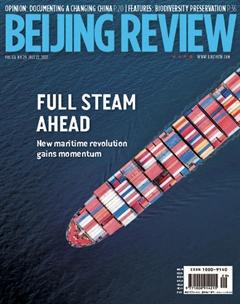New Models,Higher Levels
By Lan Xinzhen
On July 9, the Chinese Government released a document on accelerating the growth of new business forms and models in foreign trade. The document proposed to promote innovations in Chinas foreign trade sector, in terms of systems, management, service, business forms and models. Meanwhile, policies and pragmatic measures on new business forms and models of foreign trade have been drafted, covering cross-border e-commerce, market purchase, comprehensive foreign trade service companies, offshore trade, and overseas warehouses.
This latest document is seen as a top-level arrangement to accelerate the development of Chinas new business forms and models in foreign trade, yet their ultimate success relies on various efforts. International cooperation and exchanges in intellectual property rights protection and cross-border logistics chains need to be greatly promoted. Besides, a balanced mix between imported and exported commodities will be optimized. More support should lean toward the export of hi-tech, high value-added and brand products, while the import of goods closely related to the publics daily life should be amplified.
The new business forms and models are a new way to conduct foreign trade, empowered by new technologies and tools, such as digital technology, cross-border ecommerce and big data.
In China, specifically, these new types have been on the rise in recent years. According to statistics from the Ministry of Commerce, in 2020, imports and exports by Chinese cross-border e-commerce businesses reached 1.69 trillion yuan (around $260.9 billion), while cross-border ebusiness grew tenfold within five years. Its market purchase increased by five times within six years, exceeding 700 billion yuan($108 billion) in 2020. So far, foreign trade comprehensive service companies have reached 1,500 in China, serving more than 200,000 clients, while the number of overseas warehouses has exceeded 1,900.
The appeal of Chinas new business forms and models may well stem from the combination of conventional trade and crossborder e-commerce, which has led to B2B2C overseas warehousing, contributing to the efficiency of terminal distribution.
Furthermore, Chinas healthy new forms and models are good news for worldwide trade, as these models in international trade may receive a boost from China. For example, thanks to the Chinese e-business sector, new forms, such as cross-border e-business and bulk warehousing, have also begun to develop in other economies.

